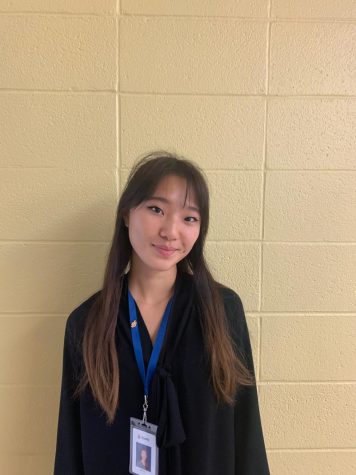New IDT Policy Causes a Stir

Credits: Tenafly HSAA Facebook
December 23, 2021
On Tuesday, Tenafly High School Vice Principal, Richard Suchanski, sent an email to students outlining the new Independent Decision Time (IDT) policy.
IDTs have been a long-standing establishment unique to THS, allowing students to decide how to manage their time. IDTs refer to free periods in a student’s schedule. Since the reopening of THS amidst the COVID-19 pandemic, IDTs have become much more integrated into the school culture. Prior to the COVID-19 pandemic, when a teacher was absent, a substitute teacher would instruct the class at its designated time and in its classroom. Now, substitutes have been removed from the picture, as substitute staffing has declined and teacher absences have increased. While in prior years students would have had substitute teachers lead their classes, now, students enjoy IDTs during their teachers’ absences. In addition to this, freshmen, who were previously not allowed to leave campus during IDTs or Study Halls, are now given the option to leave campus due to COVID safety precautions. Due to these new changes, many students have spent their now numerous IDTs and “free periods” out of the school environment.
The new protocol, called Cafeteria Classroom (CC), is a measure to return to pre-COVID times when substitutes would replace absent teachers and assign work. CC is designed to mimic pre-COVID substitute plans by designating areas for students to complete assigned work, as would be the case in regular years with substitute teachers, though with more social distancing. Freshmen and sophomores are prioritized for substitutes, “ensuring more structure to their day[s] and minimizing the potential for students to have more than one unscheduled IDT per day.” This prospect eliminates “double lunches” and the opportunity for students to arrive at school late or leave campus early if their IDT appears first block or last block.
According to the recent email sent out by the administration on Wednesday, “This is to improve the overall quality of the time and the education received during school hours.” Parents were concerned that their children were returning home or having multiple free hours throughout their school days when they should be learning in school.
There were other factors that tied into the decision to implement this policy. According to THS Principal James Morrison, there were instances in which students were being disruptive to ongoing classes by roaming the hallways. Additionally, students take for granted the idea that IDTs are a given right, when they are actually not. THS is one of the few public schools in the area that allows students, let alone freshmen and sophomores, to leave campus during a free period. Thus, it made sense to keep everyone in one space—the cafeteria.
However, the new CC protocol has incited much backlash and debate, with even a petition started by senior Yaelle Bok, garnering nearly 1,500 signatures as of Wednesday evening. The first major point of concern brought up by students, teachers, and even parents, was the hypocrisy of the administration when addressing students’ mental well-being and COVID-19 safety concerns.
For example, students who don’t have an IDT in their schedule often enjoy the hour of free time to catch up on other pressing schoolwork, or review material before an upcoming test. “While some students have IDTs built into their schedule[s], many students, especially those taking very rigorous courses, can rarely share the joy of having an IDT,” said Jacqueline Yan (’24). “As an all-honors student, I get really excited just seeing a single teacher of mine on the IDT list and sometimes it can be weeks before I’ll get another IDT. These IDTs are crucial to the mental health of the students to allow them a break from the stress of Tenafly’s well-known rigorous academics.”
The new policy may be a negative reflection on THS’s commitment to ensure that students’ mental health and wellness are prioritized above all else. “There’s absolutely no doubt that THS can be an extremely stressful place,” wrote Andres Hinspeter (’25) under the petition’s comments section. “With tests and quizzes constantly being thrown at you, tons of homework and being surrounded by people feeling the same way, it can become a stressful environment which causes anxiety.” Hinspeter further suggested that students should have the option to “go outside, study in the library, or go home. It provides a mental break for everyone and can really energize your day. IDTs are important for students to have a break in their day, and locking all the kids in a cafeteria (in the middle of a pandemic) is not the solution.”
Another major concern regarding Cafeteria Classroom is that students will be more prone to COVID-19 exposure if they were to be consolidated into one space, rather than being spread out. “Looking at [the] school’s IDT list, there could be at times around seven to 10 teachers [who are absent],” said Jeanie Lee (’23). “That could mean 40 to 80 students in the cafeteria every period when we should really be all spread out [because of] COVID-19.”
The general reaction towards CC seems to be negative. High school is a time where students are encouraged to build independence and foundational study habits that will carry on with them beyond graduation. Whether Cafeteria Classroom will serve the greater good of the student body—only time will tell.

















































































































































